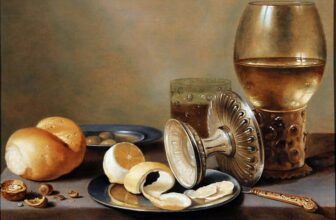
Guide to Certificates of Authenticity: Buying Antique Paintings with Confidence
Buying an antique painting can be one of the most rewarding experiences for art lovers, collectors, and investors. These artworks often carry not just aesthetic beauty but also immense historical and financial value. Yet, in today’s global art market, one of the biggest challenges facing buyers and sellers is verifying authenticity. This is where Certificates of Authenticity (COAs) play a crucial role. Whether you’re acquiring a painting attributed to Claude Monet, a rare piece from the 18th century, or simply want to ensure your artwork’s value is properly documented, understanding what a COA is, and isn’t, is essential.
This in-depth guide explains everything you need to know about Certificates of Authenticity for antique paintings: what they are, why they matter, how to verify them, and how to protect yourself from forgeries.
What Is a Certificate of Authenticity?
A Certificate of Authenticity (COA) is a formal document that verifies that an artwork is genuine. It typically confirms that a specific painting was created by a particular artist, during a specific period, and is not a reproduction or forgery.
For antique paintings, a COA carries even more weight because these works often change hands multiple times over centuries. A proper COA helps establish a provenance (the documented history of ownership) and maintains the integrity of the artwork’s value in the marketplace.
Core Elements of a COA:
Artist’s Name – The full name of the artist attributed to the work.
Title of the Work – The painting’s official or commonly known title.
Medium and Materials – Whether it is oil on canvas, tempera on wood, watercolor, etc.
Dimensions – The precise measurements of the painting.
Date of Creation – The year or period when the work was made.
Signature or Mark – Whether the artist signed the piece or used a specific mark.
Photographic Reference – A high-resolution image to match the certificate to the artwork.
Issuer Information – The person or institution issuing the COA, including credentials and contact details.
Provenance and Historical Details – Previous ownership, gallery exhibitions, or auction sales.
Authentication Statement and Signature – A clear statement confirming authenticity with the certifier’s signature.
A COA can be issued by the artist (if still living), a recognized art expert, a foundation, a reputable gallery, or a certified appraiser.
Why Certificates of Authenticity Matter in the Art Market
1. Protecting Buyers and Collectors
For collectors, especially those investing in high-value works, a COA provides peace of mind. It ensures the painting is not a reproduction or a clever forgery, a common issue with famous artists’ works. A COA establishes legal and historical standing.
2. Maintaining Artwork Value
An antique painting accompanied by a legitimate COA is typically more valuable than one without documentation. Auction houses, galleries, and private collectors are often unwilling to pay top prices without proper authentication.
3. Facilitating Resale and Insurance
When selling an artwork, a COA can speed up the sales process and justify the asking price. Likewise, insurance companies usually require authentication documents before insuring valuable art.
4. Preserving Historical Context
Many antique paintings have rich histories, wars, royal collections, and famous exhibitions. A COA helps preserve this narrative, making the work more than just an object; it becomes a documented piece of history.
COA vs. Provenance: What’s the Difference?
While both terms are related to authentication, they serve different functions:
COA: A document that certifies the authenticity of a specific artwork.
Provenance: The documented ownership history of that artwork.
For antique paintings, provenance can sometimes be more important than the COA itself. For example, a painting with a verified chain of ownership dating back centuries can hold enormous historical significance.
An ideal situation is when an artwork comes with both:
A COA from a recognized expert or institution.
A clear provenance showing where and how the painting has been kept over time.
Who Can Issue a Certificate of Authenticity?
Not all COAs are equal. The credibility of the issuer is crucial.
1. Artist or Artist’s Estate
If the artist is still living, they can issue the COA directly. For deceased artists, their estate or foundation (for example, Pablo Picasso Foundation) may provide authentication services.
2. Recognized Art Experts
Scholars, historians, or curators with specialized knowledge about a particular artist or art movement often authenticate works. Their credentials must be verifiable.
3. Reputable Galleries and Auction Houses
Institutions like Sotheby’s or Christie’s sometimes issue COAs for pieces sold through their auctions, based on their in-house authentication processes.
4. Certified Appraisers
Accredited appraisers affiliated with professional organizations may provide COAs, though their documents should always be supported by verifiable expertise.
Warning: A COA from an unknown or unqualified source may have little to no value. Always verify the credentials of the issuer.
How to Verify a Certificate of Authenticity
With the rise of art forgery, due diligence is essential. Here are the steps to verify a COA:
1. Check the Issuer’s Reputation
Research the individual or institution issuing the COA. Look for their background, references, and previous authentication work.
2. Compare with Known Databases
Many famous artists have catalogues raisonnés (comprehensive listings of their works). Cross-checking the details in the COA with such databases can reveal discrepancies.
3. Examine the Physical COA
Genuine COAs often include:
Watermarks or embossed seals
Unique certificate numbers
Detailed, specific information (not vague statements)
4. Match the COA to the Artwork
Ensure that:
The photograph in the COA matches the painting
Dimensions and materials are identical
The signature or mark matches known authentic examples
5. Get a Second Opinion
When in doubt, consult another expert. Reputable collectors often rely on multiple authentications for high-value antique paintings.
Common Red Flags in Fake COAs
Unfortunately, counterfeit COAs are common in the art market. Watch out for:
Generic language like “this painting is believed to be authentic” without clear evidence.
Lack of issuer information or unverifiable credentials.
Mismatched details between the COA and the artwork.
Digital-only certificates without any physical backup or verification.
Suspiciously low prices for high-value works.
A legitimate COA is never vague. It should be detailed, precise, and backed by credible authority.
The Role of Scientific Analysis in Authenticity
For antique paintings, COAs are often supported by scientific examination. Methods used include:
Pigment Analysis – Identifying whether the materials match the period claimed.
Carbon Dating – Verifying the age of organic materials like wood or canvas.
Infrared Reflectography & X-Ray – Revealing underdrawings and corrections typical of the artist’s process.
Signature Authentication – Comparing signatures with authenticated examples.
This scientific data, combined with a COA, strengthens the authenticity of the painting and builds confidence among buyers and institutions.
The Legal Significance of a COA
A COA is not just a piece of paper, it has legal implications. If a painting is later found to be fake and the COA was issued fraudulently, the buyer may have legal recourse. In many jurisdictions, a COA is treated as a legal document. That’s why its accuracy, issuer credibility, and verifiable details are critical.
Some major legal disputes in art history have centered on fake COAs or disputes over authenticity, leading to multimillion-dollar lawsuits. A well-documented COA can protect both buyers and sellers from such outcomes.
Digital Certificates of Authenticity and Blockchain
In recent years, the art world has begun adopting digital COAs secured by blockchain technology. Platforms and institutions are using tamper-proof digital certificates to verify authenticity and record provenance.
Advantages of blockchain COAs:
Immutable records
Easy transfer of ownership history
Reduced risk of forgery
Global accessibility for verification
For example, when dealing with high-value works from artists like Rembrandt van Rijn or J. M. W. Turner, digital COAs can complement traditional paper certificates to ensure long-term security.
How to Obtain a COA for Your Antique Painting
If your painting doesn’t already have a COA, here are the steps to obtain one:
Research Qualified Experts – Identify scholars or institutions specializing in your artist or period.
Submit Documentation – Provide high-quality photos, provenance records, and any prior appraisals.
Authentication Examination – The expert may examine the painting physically or through advanced imaging.
Scientific Testing (If Needed) – For high-value works, laboratory analysis may be required.
Issuance of the COA – Once verified, the expert provides a formal, signed certificate.
Costs vary widely depending on the painting’s value and the complexity of the authentication process.
Best Practices for Collectors and Investors
Never buy an antique painting without proper documentation.
Store the COA securely. Keep it in a safe place, separate from the artwork.
Request a digital backup of the COA, if available.
Verify authenticity before making any large purchase.
Consult multiple sources when dealing with works attributed to famous artists.
Document each transfer of ownership to maintain clear provenance.
Update appraisals regularly for insurance and estate planning.
Notable Authentication Foundations and Catalogues
For many famous artists, dedicated foundations or catalogues raisonnés are the gold standard for verification. For example:
The Van Gogh Museum for works by Vincent van Gogh
The Wildenstein Plattner Institute for Claude Monet and other Impressionists
The Rembrandt Research Project for Rembrandt van Rijn
These organizations maintain scholarly databases and are often the most authoritative sources for COAs related to specific artists.
How a Strong COA Enhances Value
A painting with a verified COA and clear provenance can command significantly higher prices at auction. For example, two seemingly similar 19th-century paintings may differ drastically in value if only one comes with strong authentication.
Investors often see COAs as a form of asset security, much like a title deed to real estate. A solid COA can make the difference between a painting being a museum-worthy asset or an unsellable decorative piece.
The Certificate of Authenticity Is More Than Just Paper
In the world of antique paintings, a Certificate of Authenticity is a cornerstone of trust. It protects buyers, ensures historical accuracy, supports legal ownership, and preserves the painting’s market value. But not all COAs are created equal, verification, credibility, and supporting documentation are everything.
Whether you’re acquiring a delicate 17th-century masterpiece or selling a family heirloom, take the time to understand the role of COAs, verify their legitimacy, and maintain proper documentation. In doing so, you’re not just buying or selling a painting, you’re safeguarding a piece of history.
Key Takeaways:
A COA is a critical document verifying the authenticity of antique paintings.
Always verify the issuer’s credibility and match COA details to the artwork.
Pair COAs with clear provenance for maximum protection and value.
Be aware of fake COAs and conduct proper due diligence.
Consider digital COAs and blockchain technology for added security.
A well-documented COA can significantly increase an artwork’s value and marketability.
Final Tip: If you’re new to collecting antique paintings, working with reputable galleries, auction houses, and certified experts can help you avoid costly mistakes. A trusted COA is your best safeguard against forgery, and your strongest asset in preserving the true worth of your collection.




